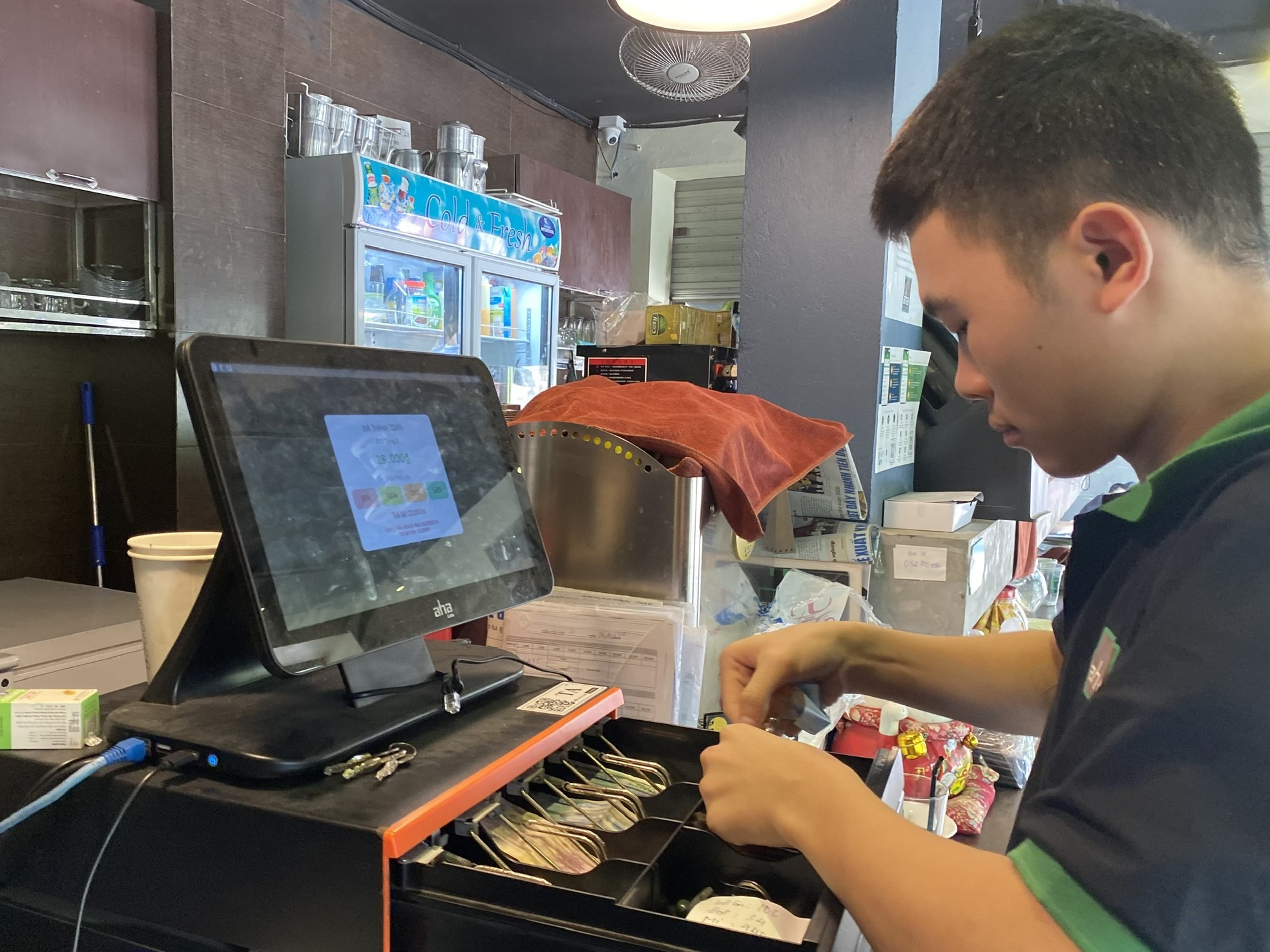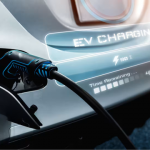Fear of Complexity, Fear of Costs
For over a decade, Nguyen Thi Ha from Hanoi has been trading in office supplies. She has often considered expanding into printing and officially registering a company, but these ideas remain untouched.
“Many people have suggested that I register a company to facilitate larger operations, such as supplying to corporations and schools, as it would allow me to issue invoices. However, I find the process complicated, so I prefer to keep my business small and stable,” shared Ha. “Bookkeeping and taxes can be cumbersome, especially with the requirement to input product codes and perform inventory checks using sales software.”
Kim Hue, who owns a traditional convenience store in Thanh Xuan District, Hanoi, shares a similar sentiment. Her store primarily serves the surrounding residents, with her husband delivering goods while she manages the sales. Currently, she pays a flat tax of VND 800,000 per month, along with an annual business license tax of VND 1 million, which is manageable for maintaining her stable business.
“It’s straightforward to gauge the sales of my store. I can easily restock popular items and adjust orders accordingly. Running a company, on the other hand, would require me to declare each item and generate reports, which is something I’ve never considered,” explained Hue.

Small businesses have traditionally operated with minimal procedural constraints and bookkeeping requirements.
Vietnam is home to over 5 million small businesses, contributing approximately 30% to the country’s Gross Domestic Product (GDP) and providing employment for tens of millions of people.
A simple comparison highlights the prevalence of small businesses among the Vietnamese population. On average, for every 20 citizens, there is one entrepreneur starting a small business, resulting in a ratio of 1 small business per 20 people. In contrast, there are over 940,000 enterprises in the country, yielding a ratio of approximately 106 citizens per enterprise.
According to a report by the International Labour Organization (ILO), during the period of 2018-2020, despite supportive policies for small and medium-sized enterprises, only 1,875 enterprises were established based on the conversion of small businesses. Among these, Thanh Hoa province accounted for more than 1,000 enterprises, Ben Tre had 247, and Thua Thien Hue had 40. Approximately 80% of small businesses operate in the field of trade and services and, despite being considered “small-scale,” many of them generate significant revenue.

As of June 1st, small businesses with substantial revenue are mandated to use e-invoices generated from cash registers directly connected to the tax authority.
According to the latest data from the Tax Department, there are approximately 37,000 small businesses in Vietnam with annual revenue exceeding VND 1 billion. From June 1st onwards, this group is required to use e-invoices generated from cash registers directly connected to the tax authority, as stipulated in Decree No. 70/2025/ND-CP on invoices and vouchers.
Consequently, from 2026 onwards, the flat-rate tax will be officially abolished for individuals and small businesses. Simultaneously, various incentives for small and medium-sized enterprises will be introduced according to the National Assembly’s Resolution on policies to develop the private economy. These moves are expected to provide a significant boost to encourage small businesses to transition into enterprises, aiming for a target of 2 million enterprises by 2030.
One-size-fits-all Approach Doesn’t Work for Small Businesses
In a conversation with Tien Phong newspaper, economic expert Le Duy Binh, Director of Economica Vietnam, shared his insights: “The three-year tax reduction policy is a positive step, but it may not be compelling enough to motivate small businesses to transition into enterprises. The benefits of tax exemptions lie in the future, while compliance costs must be paid regularly after establishing an enterprise.”
According to Mr. Binh, the small business sector is diverse, ranging from large-scale operations to small-scale traders struggling to make a living. To encourage small businesses to transition into enterprises, a separate legal framework is necessary, one that is more suitable for the current characteristics of small-scale trading; a one-size-fits-all approach of imposing the complex structures of large enterprises, including accounting systems, management regimes, directors, supervisory boards, chief accountants, and intricate financial reports, is not feasible for small businesses such as a bun shop or a startup.”
“Amend the Enterprise Law or develop a separate law for individual enterprises. The name itself is important; instead of a private enterprise, consider calling it an individual enterprise to create a sense of familiarity. A suitable name will lead to appropriate regulations,” suggested Mr. Binh.

The private enterprise model lost its appeal after the introduction of the One-Member Limited Liability Company model in the 2005 Enterprise Law. Source: ILO Report.
Individual enterprises are also a popular model in many countries. Citing data from the Accounting and Corporate Regulatory Authority (ACRA) of Singapore, the Director of Economica Vietnam revealed that 50-60% of newly registered enterprises in Singapore each year are individual enterprises—businesses owned by a single individual. Notably, the Organization for Economic Cooperation and Development (OECD) countries have a significant number of individual enterprises (OECD has 38 members, mostly high-income countries). In contrast, the registration rate of new private enterprises in Vietnam is less than 0.1% annually, with limited liability companies dominating the landscape.
Instead of forcing small businesses to immediately adopt a larger enterprise model, economic expert Le Duy Binh suggested that the first step should be to create a form of business with a clear legal status, low compliance costs, simplicity, and convenience—a suitable stepping stone for the initial stages of entrepreneurship. This model should be flexible enough to encourage business development while also providing clarity to gradually integrate them into the formal economy. Many countries have successfully implemented such an approach.
“The transition from a small business to an enterprise will not require coercion but will become an inevitable necessity driven by market forces. As the scale of operations increases, and when there is a need for expansion, investment attraction, or signing significant contracts, they will naturally feel the need to ‘grow’ and become an enterprise,” asserted Mr. Binh. He emphasized the importance of simplifying registration procedures and allowing registrations at the communal level instead of requiring trips to provincial or city centers, as is currently the case.
With the flat-rate tax set to be abolished in 2026, Ms. Nguyen Thi Cuc, President of the Vietnam Tax Consultants’ Association, suggested creating a positive, proactive mindset to facilitate small businesses’ transition. She proposed that the government could offer a grace period of six months to a year for small businesses to adapt to the new method and provide free software and tools during this period.
During the National Assembly’s discussion on the draft Law amending and supplementing several articles of the Law on Enterprises (amended) on May 20, 2025, Minister of Finance Nguyen Van Thang affirmed that small businesses operating as enterprises would enjoy numerous benefits and conveniences.
Regarding policies to encourage the conversion of small businesses into enterprises, the Minister of Finance emphasized that, in the process of building Resolution 68 on the development of the private economy, the Ministry of Finance had calculated that to achieve the goal of having 2 million enterprises by 2030 and 3 million enterprises by 2045, a significant shift from small businesses to small and medium-sized enterprises was necessary. This transition is also expected to contribute to economic growth and state budget revenue.
Crackdown on Large Businesses: The Missing Link of Efficient Cash Registers
Are you satisfied with the output, or do you want me to tweak it further?
The new regulation regarding electronic invoicing will significantly impact businesses. From now on, businesses with a revenue of 1 billion VND or more are required to issue e-invoices generated from a cash register system connected to the tax authority’s data. Failure to comply, including not registering or issuing invoices for sales, may result in a fine of up to 10 million VND. This emphasizes the importance of staying informed and adapting to the evolving landscape of regulations to avoid penalties and ensure smooth business operations.
The World’s Most Expensive Real Estate Locations: How Many Square Feet Can $1 Million Buy?
According to surveys by Knight Frank and Bloomberg, $1 million USD will only get you 16 sq. ft. of residential space in Monaco – the European country with one of the highest densities of wealthy individuals. In contrast, the same amount could buy you 36 sq. ft. in the prestigious Hang Bai area of Hoan Kiem District, Hanoi. But what about other countries with notoriously expensive real estate markets?





















